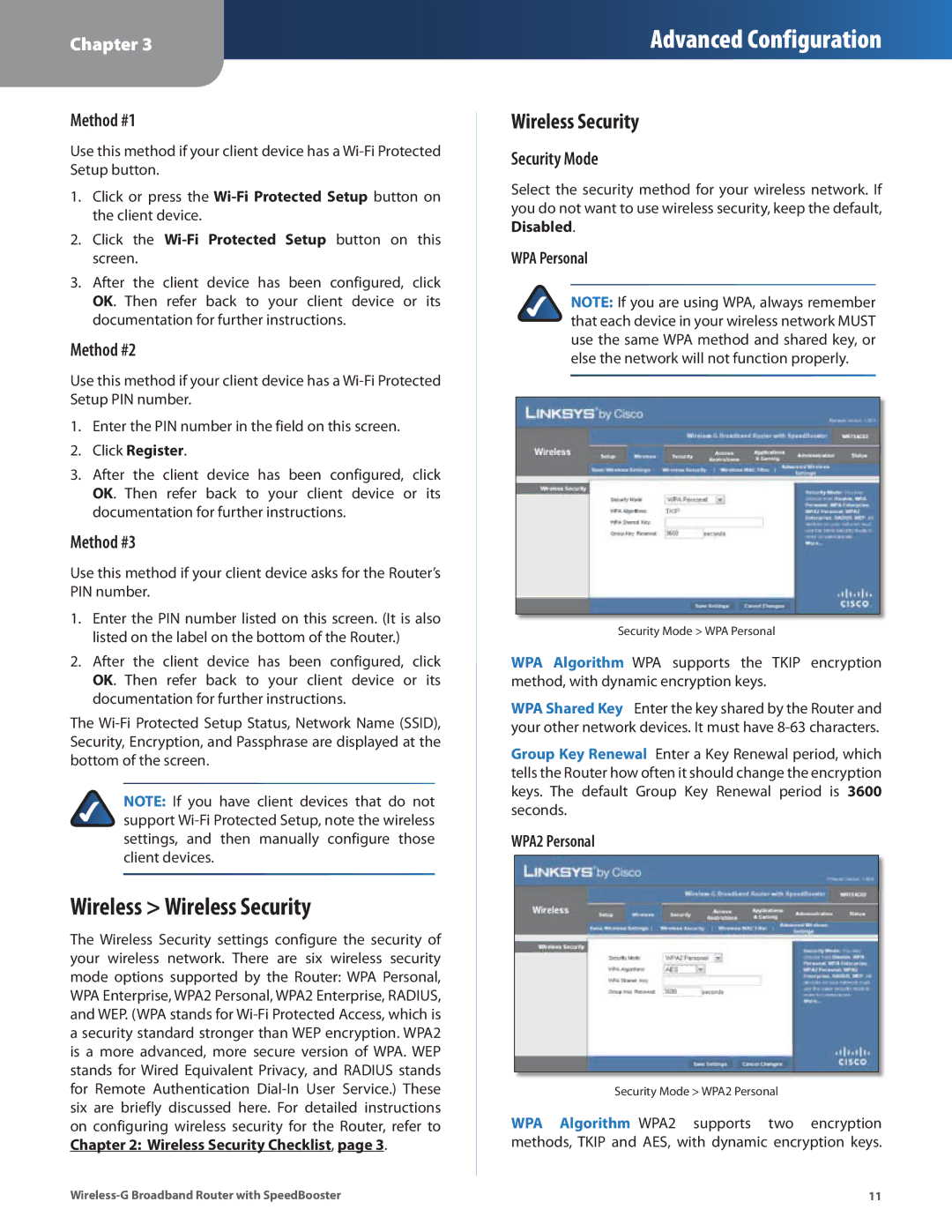
Chapter 3
Advanced Configuration
Method #1
Use this method if your client device has a
1.Click or press the
2.Click the Wi‑Fi Protected Setup button on this screen.
3.After the client device has been configured, click OK. Then refer back to your client device or its documentation for further instructions.
Method #2
Use this method if your client device has a
1.Enter the PIN number in the field on this screen.
2.Click Register.
3.After the client device has been configured, click OK. Then refer back to your client device or its documentation for further instructions.
Method #3
Use this method if your client device asks for the Router’s PIN number.
1.Enter the PIN number listed on this screen. (It is also listed on the label on the bottom of the Router.)
2.After the client device has been configured, click OK. Then refer back to your client device or its documentation for further instructions.
The
NOTE: If you have client devices that do not support
Wireless > Wireless Security
The Wireless Security settings configure the security of your wireless network. There are six wireless security mode options supported by the Router: WPA Personal, WPA Enterprise, WPA2 Personal, WPA2 Enterprise, RADIUS, and WEP. (WPA stands for
Wireless Security
Security Mode
Select the security method for your wireless network. If you do not want to use wireless security, keep the default, Disabled.
WPA Personal
NOTE: If you are using WPA, always remember that each device in your wireless network MUST use the same WPA method and shared key, or else the network will not function properly.
Security Mode > WPA Personal
WPA Algorithm WPA supports the TKIP encryption method, with dynamic encryption keys.
WPA Shared Key Enter the key shared by the Router and your other network devices. It must have
Group Key Renewal Enter a Key Renewal period, which tells the Router how often it should change the encryption keys. The default Group Key Renewal period is 3600 seconds.
WPA2 Personal
Security Mode > WPA2 Personal
WPA Algorithm WPA2 supports two encryption methods, TKIP and AES, with dynamic encryption keys.
11 |
